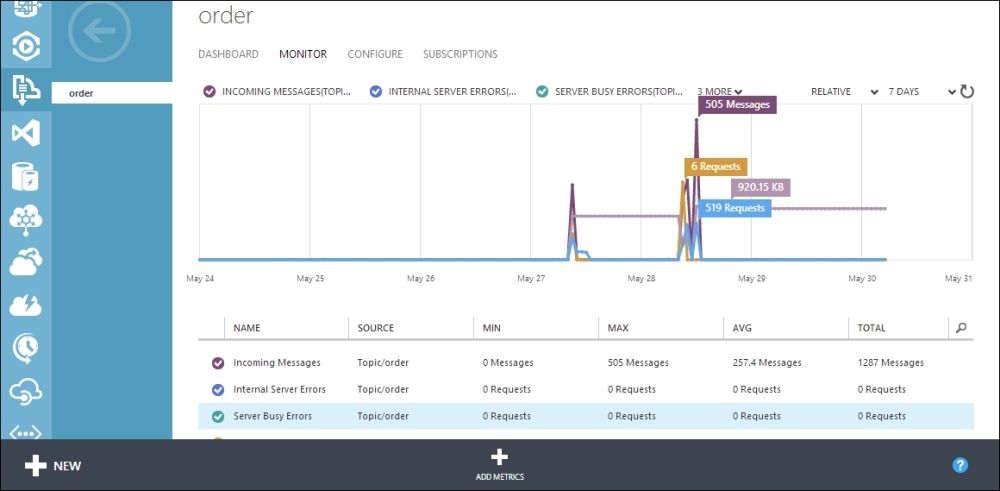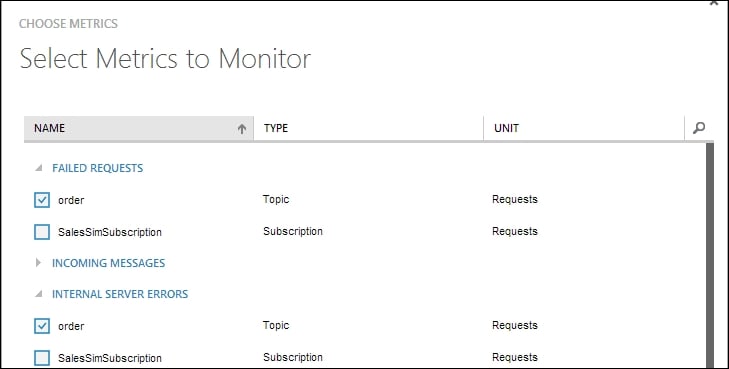In this chapter, we're going to start implementing an Azure Service Bus topic that allows the subsystems across the three business units to send order status messages to each other and receive them via topic subscriptions.
After a quick introduction to Microsoft Azure Service Bus and topics, we'll create our Service Bus infrastructure, integrate the sales customer website, and create a WPF messaging simulator application, which will introduce some of the Azure Service Bus SDK features and provide us with a useful tool to help us build and test the full enterprise system.
We'll cover the following areas in this chapter:
An overview of Microsoft Azure Service Bus topics
Creating a Service Bus topic
Connecting a website to a topic
Creating a message simulator
Exploring the portal's topic workspace
This will give us the foundations for building the rest of the system throughout the remainder of the book.






